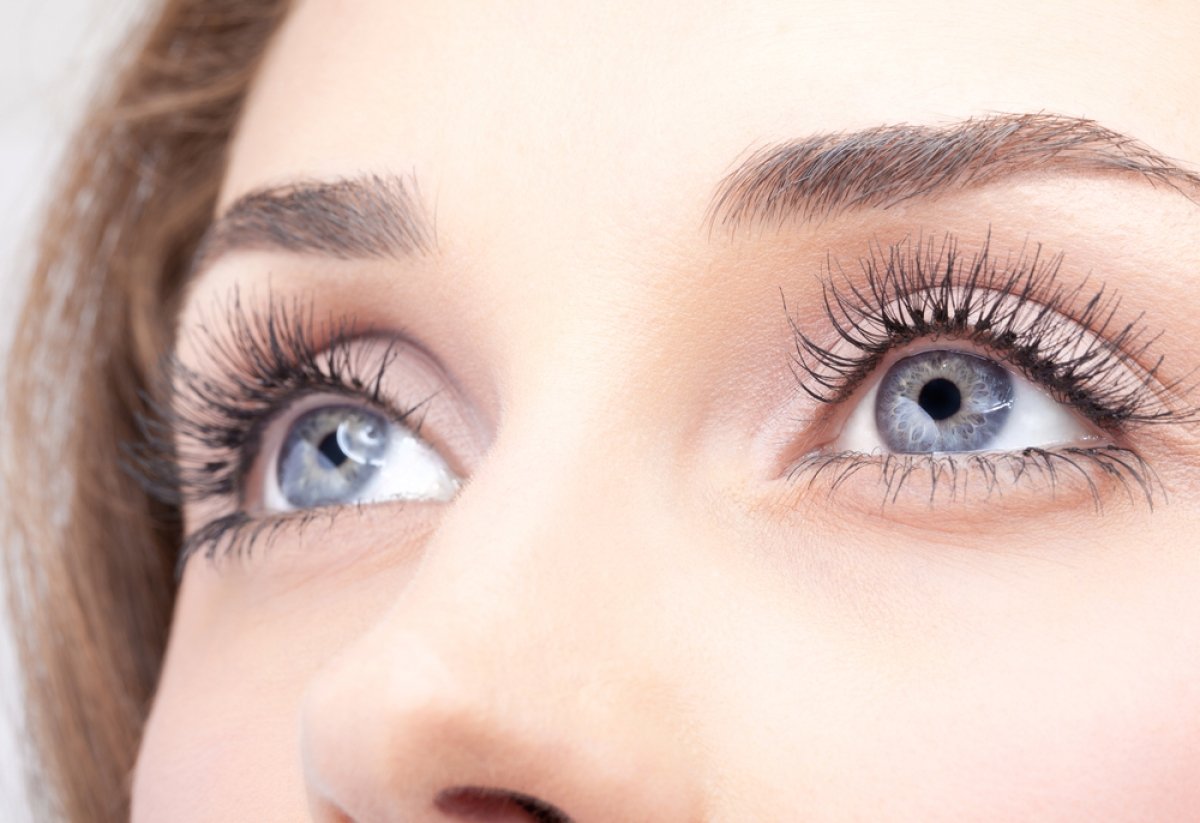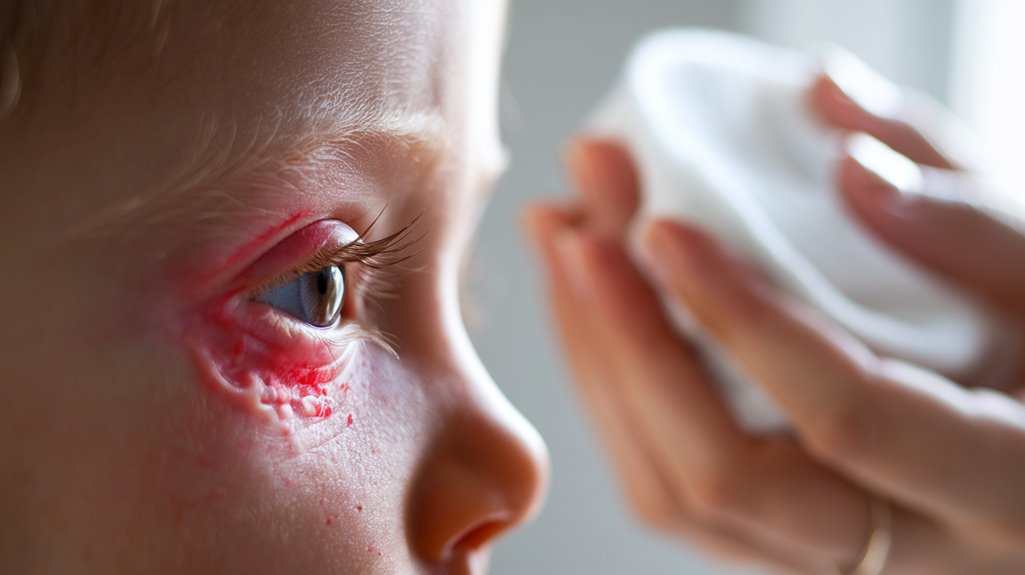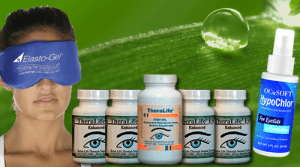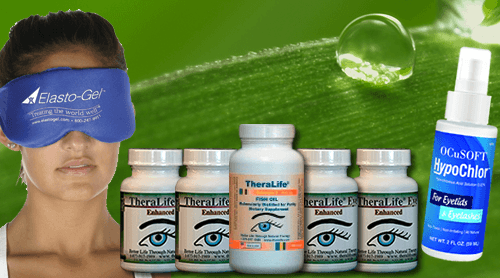Blepharitis in children is a prevalent condition often resulting from bacterial infections or allergies, manifesting symptoms like redness, irritation, and crusty eyelids. Theralife.com offers products that can significantly benefit customers dealing with blepharitis and similar eye conditions. For instance, Theralife’s natural supplements and treatments are designed to alleviate discomfort and address underlying causes effectively. Their products include natural anti-inflammatory solutions, which can be instrumental in managing symptoms and preventing recurrence.
Regular cleaning of a child’s eyelids with warm compresses and mild cleansers can ease discomfort, while Theralife’s comprehensive approach offers additional support through their specialized formulations. Their topical antibiotics and artificial tears are crafted to provide immediate relief and long-term eye health benefits. Differentiating blepharitis from similar conditions like conjunctivitis is crucial for effective treatment, and Theralife provides guidance on this as part of their educational resources.
By incorporating Theralife’s products into your care routine, you can manage blepharitis effectively, ensuring lasting eye health and comfort for your child. Discover more about their innovative treatment strategies and preventative tips on their website to support your child’s ocular well-being comprehensively.
Best Blepharitis Treatment From TheraLife
Add To Cartrstanding and control of this persistent condition.
Key Takeaways
- Blepharitis in children is marked by persistent eyelid redness, irritation, and crusty edges.
- Common causes include bacterial infections, allergies, and malfunctioning oil glands.
- Safe treatments involve regular eyelid hygiene, warm compresses, and possibly topical antibiotics.
- Early diagnosis and intervention are crucial for preventing complications in children’s eye health.
- Regular eye check-ups help monitor and manage blepharitis effectively, reducing recurrence risks.
Understanding Blepharitis and Its Impact on Children
Blepharitis, a common eyelid inflammation, can greatly affect a child’s comfort and vision. Understanding its impact is essential for providing relief and maintaining eye health.
Causes analysis reveals that blepharitis in children often stems from bacterial infections, allergies, or malfunctioning oil glands in the eyelids. These factors lead to irritation, crusty eyelashes, and potential vision problems if untreated. Regular eyelid hygiene practices, such as warm compresses and cleaning, can help manage and prevent blepharitis symptoms in children.
As a parent or caregiver, comprehending treatment options is important. Begin with maintaining eyelid hygiene: gently clean the eyelids with a warm, moist cloth. This simple step helps reduce irritation and prevents further complications.
If symptoms persist, consult an eye care professional who might recommend medicated ointments or drops. Early intervention guarantees your child’s comfort and helps prevent future issues with their precious eyesight.
Common Symptoms of Blepharitis in Young Patients
When your child experiences blepharitis, you’ll often notice redness and irritation around their eyes, which can make them quite uncomfortable. Watch for crusty eyelid edges, especially in the morning, as this is a common sign of the condition. Addressing these symptoms promptly with proper eyelid hygiene can help alleviate discomfort and prevent complications. Eyelid cleansers are essential for managing blepharitis and maintaining overall eye health, as they reduce microbial load and ocular surface inflammation.
Redness and Irritation
One of the most noticeable signs of blepharitis in young patients is the persistent redness and irritation of the eyelids.
It’s important to recognize these symptoms early to manage your child’s discomfort effectively. Eye redness and eyelid irritation can cause children to feel uneasy and often leads to frequent eye-rubbing, which can worsen the situation.
Here are some key signs to watch for:
- Constant rubbing of the eyes due to irritation
- Swollen eyelids that may appear puffy or tender
- Watery eyes that persist throughout the day
- Itchiness that makes it hard for children to focus
- Light sensitivity, causing discomfort in bright environments
Since inflammatory mechanisms play a crucial role in blepharitis, understanding these processes can help in managing symptoms effectively.
It’s vital to consult a pediatric ophthalmologist to explore safe and effective treatment options tailored for your child.
Crusty Eyelid Edges
As you notice the persistent redness and irritation in your child’s eyes, it’s also important to be aware of another common symptom: crusty eyelid edges. This occurs when oily flakes and debris accumulate along the eyelid margin, leading to discomfort. Practicing good crusty eyelid hygiene is essential in managing blepharitis. Gently clean your child’s eyelids using a warm, damp cloth or a specially formulated eyelid wipe. This helps remove crusts and prevent further irritation. You may also consider crusty eyelid remedies like applying a warm compress to soften the crusts, making them easier to clean. Consistent use of evidence-based treatment plans, such as omega-3 supplements and tea tree oil, can further aid in symptom management. Encourage your child not to rub their eyes, as this can worsen symptoms. With consistent care, you can help alleviate their discomfort and promote healthier eyelids.
Differentiating Blepharitis From Other Eye Conditions
When evaluating eye conditions in children, differentiating blepharitis from other common misdiagnoses like conjunctivitis or a stye is essential. You’ll notice that blepharitis often presents with unique symptoms such as greasy eyelid crusts and persistent eyelid redness, which aren’t typically seen in other conditions. Early recognition and treatment guidance can help manage the condition effectively and improve your child’s comfort. It’s important to understand that blepharitis is the inflammation of eyelids, frequently linked to chronic dry eyes, and requires specific treatment to prevent complications.
Common Eye Condition Misdiagnoses
Understanding the nuances between blepharitis and other common eye conditions in children can be challenging but is essential for effective treatment. Misdiagnosed conditions often lead to treatment misconceptions, where inappropriate remedies might be applied, potentially worsening symptoms. To accurately identify blepharitis, it’s important to differentiate it from other eye issues. Conjunctivitis: Often confused due to redness and irritation, but differs in cause. Styes: These painful lumps can resemble blepharitis but are localized infections. Dry Eye Syndrome: Similar symptoms, yet it involves tear production issues. Chalazion: A blocked oil gland can mimic blepharitis, lacking inflammation. Allergic Reactions: Red, itchy eyes might seem like blepharitis but stem from allergens. Understanding these differences guarantees children receive the right care. Additionally, proper eye hygiene practices are crucial in preventing infections and ensuring effective treatment.
Blepharitis Unique Symptoms
Children with blepharitis often experience red, swollen eyelids that may itch or burn. Unlike typical eye infections, blepharitis can have crusty flakes at the base of the eyelashes. These symptom variations are vital in differentiating blepharitis from conjunctivitis or allergies. Unique triggers, such as seborrheic dermatitis or staphylococcal infections, can exacerbate these symptoms. Proper eyelid hygiene is crucial in managing blepharitis, as it helps prevent bacterial growth and reduces the risk of recurring inflammation. Be attentive to persistent eyelid inflammation that doesn’t improve with standard allergy or infection treatments. It’s essential to consult an eye care specialist who can accurately diagnose and guide you on appropriate treatment. Early intervention can prevent complications and improve your child’s comfort and eye health.
Bacterial Infections as a Cause of Blepharitis
Although blepharitis in children can stem from various causes, bacterial infections often play a significant role. When dealing with bacterial blepharitis, it’s essential to manage the infection effectively to guarantee your child’s comfort and health.
Bacterial blepharitis typically involves the overgrowth of bacteria along the eyelid margins, causing inflammation and discomfort. Proper infection management can prevent complications and promote healing.
Here’s how you can approach it:
- Maintain eyelid hygiene: Clean your child’s eyelids gently with a warm, damp cloth.
- Use prescribed antibiotics: Follow your pediatrician’s advice on antibiotic use.
- Monitor symptoms: Keep an eye out for persistent redness or swelling.
- Consult regularly: Ensure regular check-ups with your child’s eye doctor.
- Educate your child: Teach them not to rub their eyes.
Regular follow-ups with an eye care professional are recommended to monitor the condition and adjust treatment if necessary. Effective management is key to alleviating symptoms and guaranteeing your child’s well-being.
The Role of Skin Conditions in Eyelid Inflammation
When managing eyelid inflammation in children, skin conditions like eczema and seborrheic dermatitis can often play a significant role.
These conditions can make your child’s eyelids prone to irritation and inflammation. Eczema, for example, can cause the skin to become dry and itchy, acting as a skin irritant that aggravates blepharitis.
Seborrheic dermatitis can lead to flaky skin around the eyes, further inflaming the eyelids.
It’s vital to identify and manage allergy triggers that might exacerbate these conditions.
Using gentle, hypoallergenic products can help minimize irritation. Regularly moisturizing the affected areas and avoiding known irritants are necessary steps in managing your child’s symptoms.
Consult your pediatrician for tailored treatment plans to guarantee safe and effective relief for your child’s eyelid inflammation.
A primary cause of blepharitis in children can be meibomian gland dysfunction, which is also a significant factor in adults, necessitating proper eyelid hygiene.
Environmental Factors Contributing to Blepharitis
Understanding environmental factors is essential in managing blepharitis in children. Certain elements in your child’s environment can act as environmental irritants, triggering or worsening eyelid inflammation.
By identifying and minimizing these factors, you can help reduce flare-ups. Here are common contributors to evaluate:
- Dust and pollen: These can serve as allergy triggers, leading to itchy, inflamed eyelids.
- Pet dander: Household pets might contribute to ongoing irritation.
- Pollution and smoke: Exposure to these can worsen blepharitis symptoms.
- Harsh chemicals: Cleaning products and certain cosmetics can irritate sensitive eyelid skin.
- Dry air: A lack of humidity can exacerbate dryness and irritation.
Taking steps to manage these environmental factors can greatly alleviate your child’s discomfort and support their overall eye health. Additionally, maintaining eyelid cleanliness with gentle cleansers can help prevent buildup of irritants and reduce inflammation.
Diagnosing Blepharitis in Children: What to Expect
When diagnosing blepharitis in your child, you’ll want to watch for symptoms like red, swollen eyelids or frequent eye irritation.
During a professional consultation, the doctor will explain diagnostic procedures, which may include a thorough eye examination to assess these symptoms.
It’s essential to seek expert advice to guarantee accurate diagnosis and effective treatment planning.
Symptoms to Observe
Although blepharitis can be challenging to identify in children, knowing its symptoms can guide you toward effective diagnosis and treatment.
Observing the symptom duration and severity is essential in understanding this condition. Symptoms often persist and can vary in intensity, impacting your child’s daily activities.
Be attentive to these signs:
- Redness and swelling: Eyelid edges may appear red and puffy.
- Crusty lashes: Noticeable crusts can form on the eyelashes, especially after waking.
- Frequent blinking: Your child may blink more often to alleviate discomfort.
- Eye irritation: Complaints of itchiness or a burning sensation are common.
- Tearing or dryness: Excessive tearing or dry eyes can occur, impacting vision.
Recognizing these symptoms early can help manage blepharitis effectively and guarantee your child receives appropriate care.
Diagnostic Procedures Explained
Identifying blepharitis in children requires careful attention to diagnostic procedures that can confirm the condition. When you visit an eye specialist, they’ll start by examining your child’s eyelids and lashes under magnification. This allows them to look for telltale signs of inflammation or debris.
In certain cases, diagnostic imaging might be used to get a closer look at the eyelid structure and glands, guaranteeing no underlying issues are missed.
Lab tests can also play a significant role. They might take samples from your child’s eyelid margin to check for bacteria or fungi, which could be causing the irritation.
These procedures provide a thorough understanding of your child’s condition, allowing the doctor to recommend the most effective and safe treatment options for managing blepharitis.
Professional Consultation Importance
Seeking professional consultation is essential for effectively diagnosing and managing blepharitis in children. Early intervention plays a vital role in preventing complications and guaranteeing your child receives the best care.
A healthcare provider can accurately diagnose the condition and tailor a treatment plan to address your child’s specific needs. Here’s what you can expect from a professional consultation:
- Comprehensive eye examination to identify blepharitis signs.
- Discussion on the importance of early intervention to prevent further issues.
- Guidance on proper eyelid hygiene to manage symptoms.
- Parental education on recognizing symptoms and administering treatments.
- Follow-up care to monitor progress and adjust treatment as needed.
Trusting professionals guarantees your child receives the appropriate care, empowering you with the knowledge to support their eye health effectively.
Effective Home Care and Hygiene Practices
When managing blepharitis in children, adopting effective home care and hygiene practices is essential for alleviating symptoms and preventing recurrence.
Start by teaching your child proper eyelid hygiene. Gently clean their eyelids daily using a warm, damp cloth or a cotton pad soaked in diluted baby shampoo. This helps remove crusts and debris, reducing irritation.
Encourage your child to avoid rubbing their eyes, as it can worsen the condition. Home remedies like warm compresses can soothe discomfort by loosening clogged oils in the eyelid glands.
Apply a warm compress for about 5-10 minutes, ensuring it’s not too hot. Consistent practice of these simple measures can greatly improve your child’s comfort and help manage blepharitis effectively.
Best Blepharitis Treatment From TheraLife
Add To Cartrstanding and control of this persistent condition.
Medications and Treatments for Pediatric Blepharitis
Though managing blepharitis in children can be challenging, understanding the available medications and treatments is vital for effective care.
You’ll find that a combination of therapies often works best. Topical antibiotics are frequently prescribed to reduce bacterial overgrowth and inflammation. Regular eyelid scrubs help maintain cleanliness and remove crusts or debris from your child’s eyelids. Warm compresses can soothe irritation and loosen crusts. Artificial tears may provide relief if your child’s eyes become dry or irritated.
Consulting a pediatric ophthalmologist guarantees proper treatment plans tailored to your child’s needs.
- Topical antibiotics: Reduce bacterial infection and inflammation.
- Eyelid scrubs: Maintain eyelid hygiene.
- Warm compresses: Alleviate discomfort and loosen crusts.
- Artificial tears: Lubricate and soothe dry eyes.
- Consultation with a pediatric ophthalmologist: Tailored treatment plans.
Preventing Recurrence and Protecting Children’s Eye Health
To effectively prevent the recurrence of blepharitis and protect your child’s eye health, establish a consistent and thorough eyelid hygiene routine.
Start by gently cleaning your child’s eyelids daily using a warm, damp cloth. This helps remove debris and reduce inflammation. Consider using a mild, child-safe eyelid cleanser as part of your preventive measures.
Encourage your child to avoid rubbing their eyes, minimizing irritation and potential infection.
Ensure your child refrains from using old or contaminated eye makeup, and educate them on the importance of not sharing personal items like towels.
Regular eye check-ups with a pediatric ophthalmologist can also play an essential role in maintaining ideal eye health.
These steps, when consistently followed, considerably lower the risk of blepharitis recurrence.
Frequently Asked Questions
Can Blepharitis Affect a Child’s Vision Long-Term?
You’re likely concerned about the vision impact of blepharitis on your child.
While blepharitis can cause discomfort, it rarely leads to long-term effects on vision when managed properly.
It’s essential to follow a consistent treatment plan, including eyelid hygiene and any prescribed medications.
Regular check-ups with an eye specialist guarantee the condition doesn’t worsen.
Addressing symptoms promptly can prevent potential complications, safeguarding your child’s vision for the future.
Are There Any Dietary Changes That Can Help Manage Blepharitis?
To help manage your child’s blepharitis, consider dietary changes. Incorporate omega fatty acids into their meals, as these can reduce inflammation. Foods like fish, flaxseeds, and walnuts are excellent sources.
You might also explore dietary supplements after consulting a pediatrician. It’s essential to guarantee a balanced diet, supporting overall eye health.
Regularly monitor symptoms and keep in touch with healthcare providers for tailored treatment guidance.
How Can I Tell if Blepharitis Is Improving?
You’ll notice symptom improvement in blepharitis when your child’s eyes seem to sparkle like stars rather than looking like they’ve been in a sandstorm.
Watch for reduced redness, swelling, and fewer crusts or flakes on the eyelids. Treatment effectiveness is evident when your child stops rubbing their eyes as if they’re trying to start a fire.
Keep monitoring these signs and guarantee you’re following the treatment plan closely for continued progress.
Can Stress Cause Blepharitis Flare-Ups in Children?
Yes, stress can indeed trigger blepharitis flare-ups in children.
Emotional triggers may exacerbate symptoms, making stress management essential. Encourage calming activities and establish routines to help your child cope. Teaching relaxation techniques can also be beneficial.
If flare-ups persist, consult a pediatrician for targeted treatment guidance. Addressing both physical and emotional aspects can greatly improve your child’s condition and overall well-being.
Don’t underestimate the power of a calm environment.
What Are the Potential Complications if Blepharitis Is Left Untreated?
If you leave blepharitis untreated in children, you risk several complication risks.
Symptoms like eye irritation and redness can worsen, possibly leading to styes or chalazia.
Untreated symptoms may also cause chronic eye inflammation, which can impact vision over time.
Encourage proper treatment to prevent these issues and guarantee your child’s comfort.
Early intervention is key to managing symptoms and reducing the risk of further complications.
Best Blepharitis Treatment From TheraLife
Add To Cartrstanding and control of this persistent condition.
Conclusion
With the help of TheraLife.com’s products, you can effectively address and manage blepharitis in children, ensuring improved eye health. By understanding the symptoms and causes, you can take proactive steps to combat this condition. TheraLife.com offers a range of treatments that are designed to enhance eye health and provide relief from blepharitis symptoms. Their products aid in maintaining impeccable hygiene and banishing bacterial invaders, thus soothing irritated eyelids. By utilizing these treatments, you can prevent recurrences and ensure your child’s eyes remain healthy and vibrant. Your dedication to using TheraLife’s products will be appreciated by your child’s eyes, ensuring their well-being.





